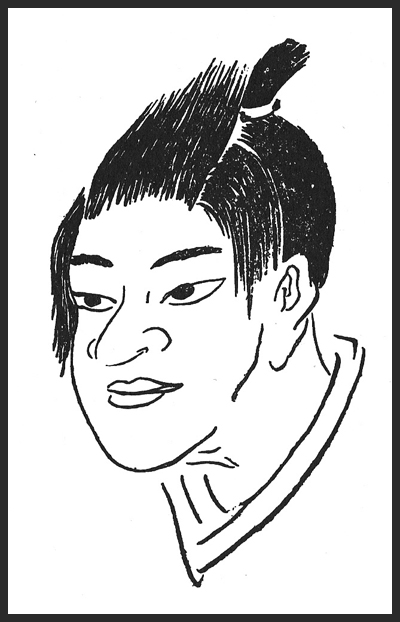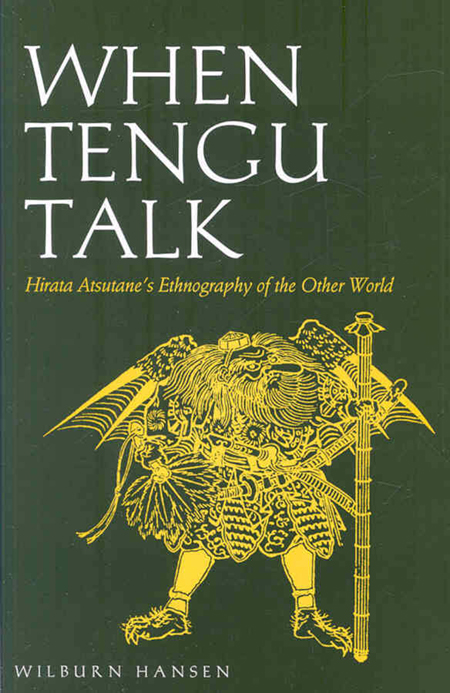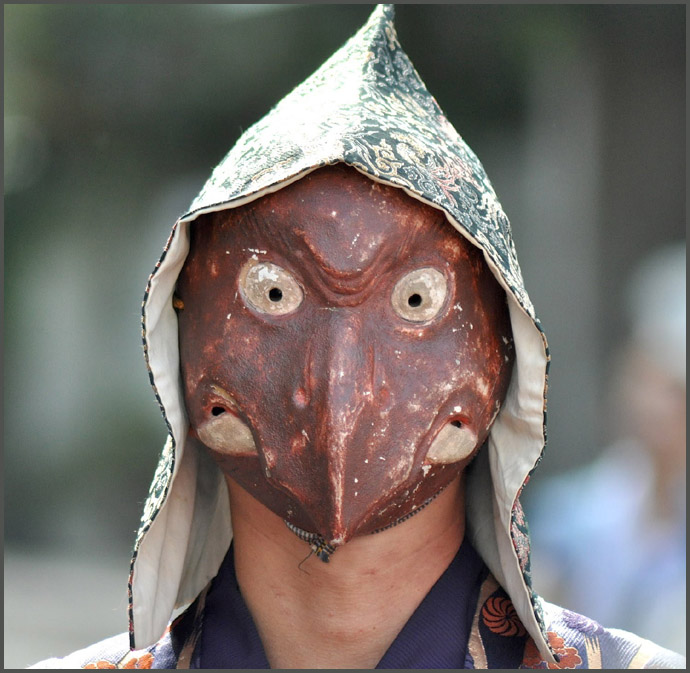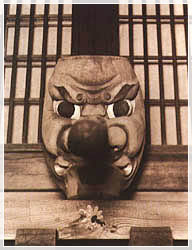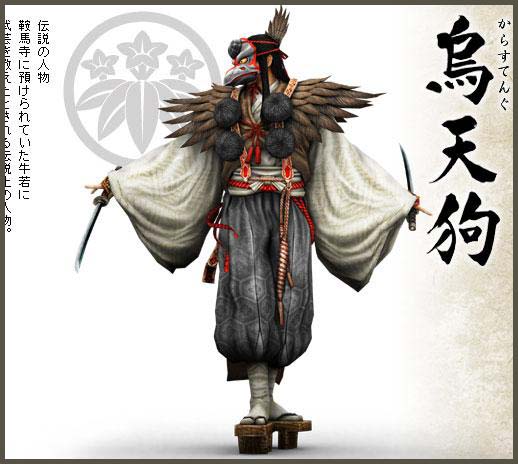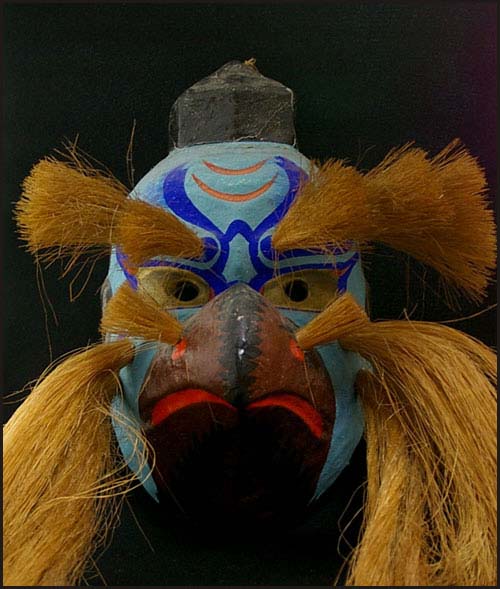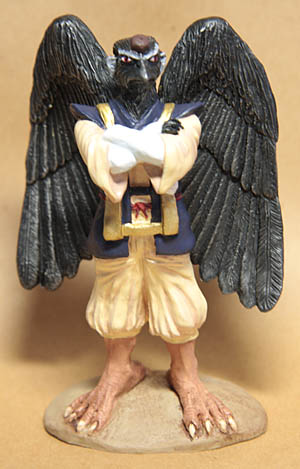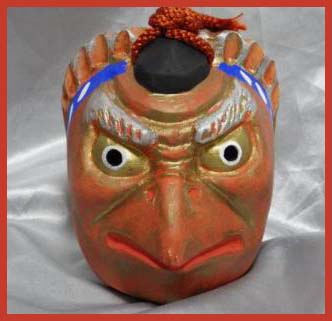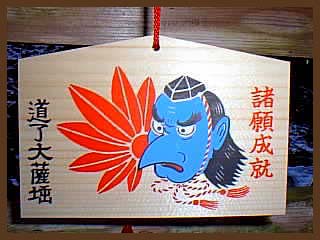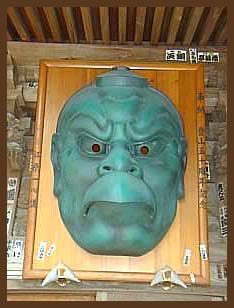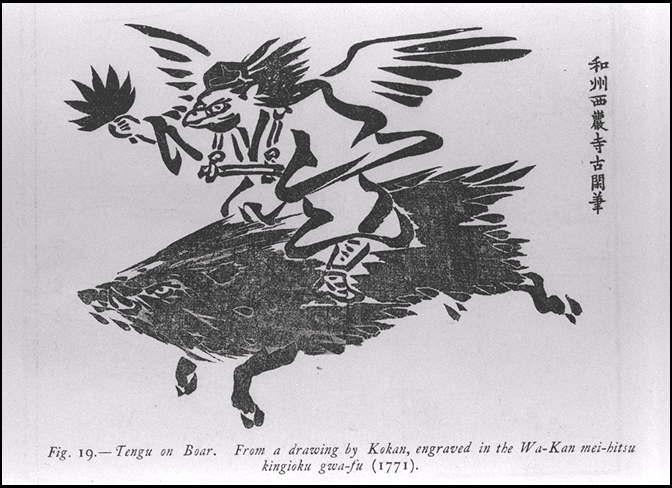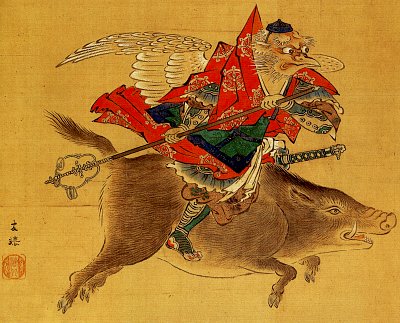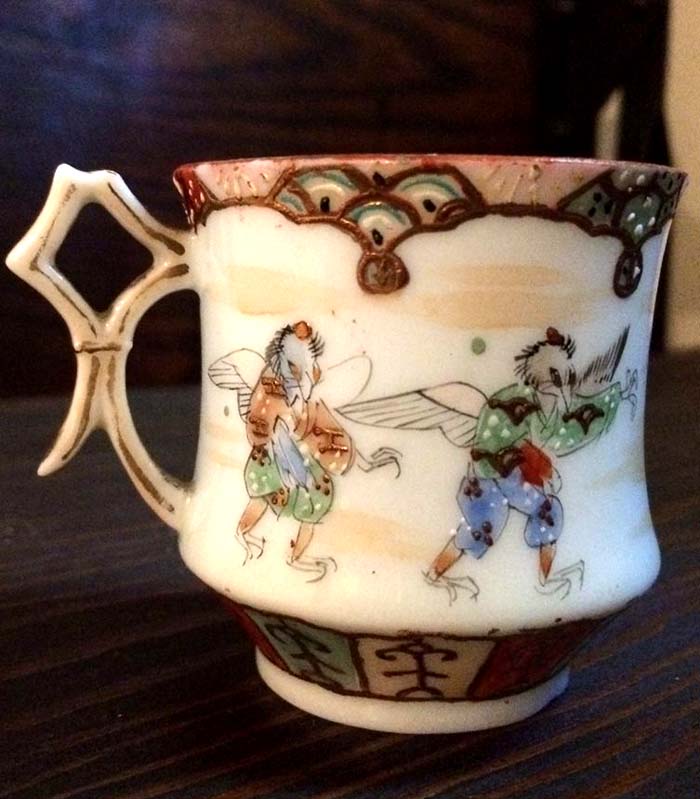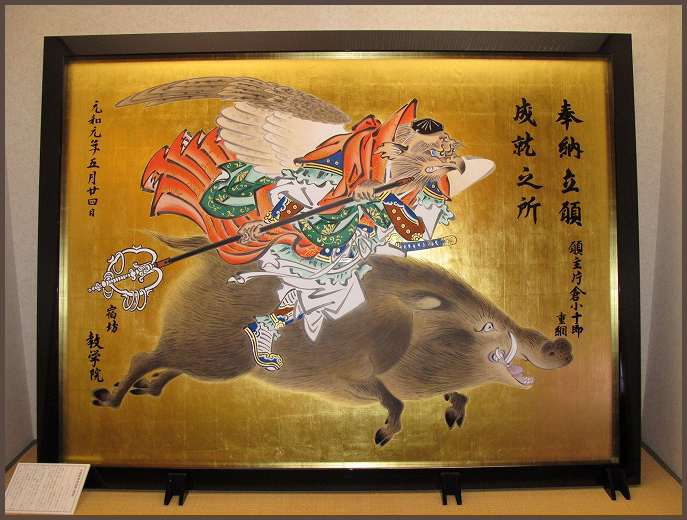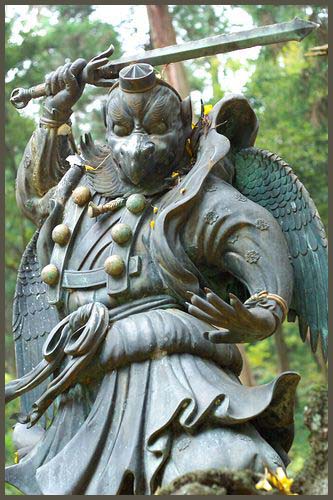[ . BACK to DARUMA MUSEUM TOP . ]
. Tengupedia - 天狗ペディア - Tengu ABC-Index .
:::::::::::::::::::::::::::::::::::::::::::::::::::::::::::::::::::::::::::::::::::::::::::::::::::::::::::::::::::::::::::::::::::::::::::::::::::::::::::::::::::::::::::::::::::
Hakusanboo 白山坊 Hakusan-Bo, Hakusanbo
The Priest from Hakusan
Hakusan (Shirayama) 白山 "White Mountain", Mount Haku
. Shirayama Hongu Shrine 白山本宮 Ishikawa .
- Introduction -
There are many Hakusan shrines 白山神社 in Japan.
白山寺 Hakusan-ji Temple
 CLICK for more photos !
Taichoo, Taichō 泰澄上人 Saint Taicho Shonin
CLICK for more photos !
Taichoo, Taichō 泰澄上人 Saint Taicho Shonin
Taicho-Daishi 泰澄大師 Taicho Daishi (682 ?683 - 767)
Etsu no Daitoku 越の大徳 - Great Man of Virtue from Etsu
Unpen Shoonin 雲遍上人 Saint Unpen Shonin
Shiramine Daisoojo 天狗 白峰大僧正 Tengu Shiramine Daisojo
He was a teacher of Buddhism and later became a Tengu at Mount Hakusan.
He was the second son of the samurai family of
Mikami no Yasuzumi 三神安角(みかみのやすずみ)and became a monk at age 14.
He practised austerities at 愛宕山 Mount Atago together with En no Gyoja 役小角 En no Ozunu, where they met three Tengu and got special teachings and training.
While they were at the mountain, a strong rain hindered their meditation and they prayed for help.
Suddenly three Great Tengu 大天狗 appeared, Nichiryo from India 天竺(インド)の日良, Zegai from China 唐の善界 and Tarobo from Japan 日本の太郎坊.
"We have protected the Buddhist Law for more than 2000 years and helped the people who lived there."
Then they disappeared.
Taicho declared the huge
sugi cedar tree 杉 where this happened「清滝四所明神」Kiyotaki Shisho Myojin and on orders from the Court built a mausoleum for the emperor where the Deity 愛宕大権現 Atago Gongen was venerated, now 白雲寺 Hakuun-Ji(愛宕神社 Atago Jinja).
(This legend became popular in the Edo period.
And thus 愛宕山太郎坊 Tarobo from Mount Atago became the Boss of all Japanese Tengu.)
. Atago Jinja 愛宕神社 The Atago shrines of Japan .
Mount Atago 愛宕山, Kameoka, Kyoto.
Priest Taicho kept on travelling. In 117年 he climbed mount Hakusan in Echizen province and enshrined a "super Bosatsu" :
Myoori Daibosatsu 妙理大菩薩 The Godess Myori Daibosatsu.
In 717, the great Buddhist monk and teacher, Taicho Daishi, guided by a woodcutter Gongoro Sasakiri, climbed high up Mount Hakusan, an isolated sacred mountain, in order to meditate.
One night,
while Taicho was sleeping after beginning his rigorous regime of spiritual exercises, the guardian deity of Mount Hakusan appeared to him in a dream and said:
‘Lying about twenty-three kilometers from the foot of the mountain is a village called
Awazu. There you will find an underground spring of hot water with wondrous, curative powers, which have been bestowed upon it by Yakushi Nyorai, the Divine Healer. However, the villagers are unaware of this blessing. Go down from the mountain and go to Awazu. With the people of the village, unearth the hot spring and it will serve them forever.’”
..............................................................................................................................................
 - quote -
Hooshi Ryookan 法師旅館 Ryokan Hotel Hoshi
- quote -
Hooshi Ryookan 法師旅館 Ryokan Hotel Hoshi
石川県小松市粟津温泉 Ishikawa, Komatsu, Awazu Onsen
The roots of (Hooshi) Hoshi, the most ancient inn all over the world are truly divine. According to legend in 717 a noted monk Taicho hiked high up Mt Hakusan, a saint and isolated mountain. While Taicho was asleep one night after starting his rigid training exercises, the God of Hakusan turned up while sleeping.
He ordered him to go to a village known as Awazu as there was an underground hot spring with wondrous powers. The people of the village did not know of the good fortune. After dreaming Taicho made his way down to the village and uncovered the gem laying underneath the earth’s surface. Afterwards the priest requested his disciple to build and operate a spa at the site.
Generation after generation, Hoshi proprietors got the name 善吾楼
Zengoro Hoshi. The first Zengoro guided Taicho Daishi to the top of Mt. Hakusan. Quite a few people undergoing illnesses visited the spa built. People started making donations. He then used the money to expand the services he offered.
- reference source : nvisionservices.com -
- quote -
Kippoji Temple 吉峰寺
It is believed that this temple was established by Taicho Daishi (the great teacher). Dogen Zenji stayed at this Dojo (Buddhist's training school) from the start of his days in the Echizen province. ...
... there is also 'Kaizan Zazen Ishi' which is a rock where it is said that Dogen sat in Zen meditation. Next to it is a spring flowing from Mt. Hakusan.
Yoshinogatake - Zaosan
This mountain is one of top 5 mountains in Echizen. Many holy and miraculous spots are found there, such as 'Zao Gongendo' that
Taicho Daishi is said to have enshrined. Ruins of an accommodation for the people who were training on the mountain during the Heian period can be found here, along with the holy spring called 'Akamizu', which mountain ascetics in training offered to the gods and Buddha.
- source : zennosato.jp/310_annai -
- quote -
Power of Water: Mt. Haku
Height: 2702.14m
Location: Gifu, Fukui and Ishikawa prefectures
Mt. Haku was first scaled in 717 by
Shintoist Taicho, and has since then attracted many worshippers.
- source : jpninfo.com -
..............................................................................................................................................
- quote
北陸白山御前峰の天狗 - 白峰大僧正
The Tengu Shiramine Daisoojo 白峰大僧正 Shiramine Daisojo
 - source : Toyota Toki とよた 時 / 画房【とよだ 時】 Toyoda Toki
- source : Toyota Toki とよた 時 / 画房【とよだ 時】 Toyoda Toki
The "White Mountain" has three important peaks
Gozenpō 御前峰 Gozenpo (2,702 meters), Ōnanjimine 大汝峰 Onanjimine (2,684 meters) and 剣ヶ峰 Kengamine (2,677 meters). A bit further away is 別山 Mount Bessan.
Taicho climbed the moutani with a disciple and eventually became
白峰大僧正という天狗 the Great Tengu Priest of Shiramine.
..............................................................................................................................................
- quote -
- - - 役小角と泰澄が太郎坊と出会う天狗伝説
- reference source : fushigi-chikara.jp/sonota -
- reference - 白山坊 -
- reference - Hakusanbo -
:::::::::::::::::::::::::::::::::::::::::::::::::::::::::::::::::::::::::::::::::::::::::::::::::::::::::::::::::::::::::::::::::::::::::::::::::::::::::::::::::::::::::::::::::::
- quote -
白山坊(はくさんぼう)とは白い狐の妖怪で、
Hakusanbo is a white fox Yokai !
妖怪キツネ白山坊 Yokai Kitsune Hakusanbo
by Mizuki Shigeru
An old white fox of more than 100 years, appears in the movie ゲゲゲの鬼太郎 Gegege no Kitaro
The origin dates back to the Edo period collection of Yokai
絵本百物語
Ehon Hyaku Monogatari.
 CLICK for more photos !
CLICK for more photos !
妖狐・白山坊の花嫁
白山坊 ビバ! お化け屋敷
布をまとった狐の顔をした妖怪。
強い妖力を持ち、無生物を操ったり、無生物に化けたり出来る。また、術をかけることで人間に幸運を授ける、人の心を操る、普通の狐に言葉を話せるようにするなどの行為が可能。
基本的には、危機的状態にある人間に対し「命を助けてやる、ただし娘が16歳になったら嫁にもらう」という契約を持ちかけ、その後もらった娘を、嫁と称して食べようとする。
江戸時代の奇談集『絵本百物語』
にある狐の妖怪・白蔵主をモチーフにしたものとの説がある。
- reference source : wikipedia -
 source : Stan on facebook
source : Stan on facebook
::::::::::::::::::::::::::::::::::::::::::::::::::::::::::::::::::::::::::::::::::::::::::::::::::::::::::::::::::::::::::::::::::::::::::::::::::::::::::::::::::::::::::::::
- - - - - H A I K U - - - - -
火蛾とんで泰澄行列始まれり
higa tonde Taichoo gyooretsu hajimareki
a fire moth flies along -
the procession of Taicho
is now beginning
Tr. Gabi Greve
田上さき子 Tagami Sakiko
. hi ga 火蛾 "fire moth" .
- kigo for all summer -

白峰のかんこ踊り Kanko Odori
During the Hakusan Matsuri festival in July:
The procession is in memory of Taicho coming down from the mountain. Taicho is represented by a man age 36, the same as Taicho at that time.
There are yamabushi 山伏 mountain priests blowing the horagai ほら貝 conch and young boys holding torches.
When the procession reaches the center of the village,
they stop and perform the
kanko odori かんこ踊り
Kanko dance.
kanko odori かんこ踊 Kanko dance, in honor of Taicho coming down from the mountain.
Once upon a time
a man saw smoke coming from the side of the mountain. When he went there, he found a priest and two companions. The priest said his name was Taicho and asked the man to lead him to the village.
The villagers thought the deity of Mount Hakusan had come down from the mountain and performed a welcoming dance for the group.
kanko 神迎(かんこ)踊
means "welcoming the deity".

.......................................................................
泰澄の開きたる湯に年忘れ
Taichoo no hirakitaru yu ni toshi wasure
to the hot spring
opened by Taicho -
end of the year
新田祐久 Nitta Sukehisa
::::::::::::::::::::::::::::::::::::::::::::::::::::::::::::::::::::::::::::::::::::::::::::::::::::::::::::::::::::::::::::::::::::::::::::::::::::::::::::::::::::::::::::::
. sennin 仙人と伝説 Legends about Immortals and Hermits .
. 日本の仙人37人 - The 37 Immortals of Japan .
Taicho is number
07 泰澄大徳
Taicho Daitoku (682 - 767)
..............................................................................................................................................
................................................................................. Fukui 福井県
.......................................................................
大野市
Ono city 五箇村
Goka mura
daija 大蛇 huge serpent
Taicho had thrust his sword into a rock by the pond to bind and confine the serpents that had caused evil in the villages at the foot of the mountain.
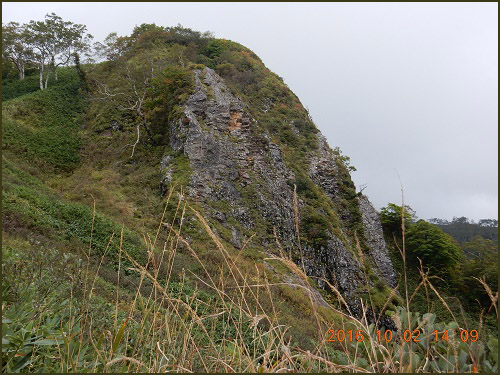
The rock is called
Kengaiwa 剣ヶ岩 "Rock of the sword".

The pond is called
Senjagaike 千蛇ヶ池 "Pond of 1000 serpents".
Women are not allowed in the pond, they will die if they try to.
................................................................................. Gifu 岐阜県
.......................................................................
上保村
Kamiho
tsue 杖 walking staff of a priest
At the temple 専龍寺 Senryu-Ji in Kamiho village there is a cherry tree which grew out of the walking staff of Saint Taicho.
It is now called 泰澄桜
Taicho Sakura.
 ................................................................................. Ishikawa 石川県
kongoo tsue 金剛杖 sacred walking staff of a priest
................................................................................. Ishikawa 石川県
kongoo tsue 金剛杖 sacred walking staff of a priest
Near the village 尾添 Ozo, there is kongoozue hinoki 金剛杖桧 a cypress tree that has grown out of the walking staff from Taicho.
.......................................................................
Ishikawa, 輪島市
Wajima
kani 蟹 crab and daija 大蛇 huge serpent
During a drought, a farmer said he would give his daughter in return for someone who would put water into his rice fields. Out of nowhere there came a young man who did it in just one night. He was the huge serpent from the river pool at 輪島川
Wajimagawa and now tried to get his bride. He wound himself around the house seven times and then get into the entrance, but inside was a large crab which managed to cut the serpent into nine parts. Where its bones fell down there are now nine ponds. The place where the head fell down is called
Oyaike 親池 "Main Parent Pond".
Near that pond a family named 笠原 Kasahara came to live as an incarnation of the vengeful spirit of the snake.
When Taisho heard of the story, he came down and used his spiritual power to break the curse of the family.
................................................................................. Niigata 新潟県
.......................................................................
柏崎市
Kashiwasaki
hachi 鉢 begging bowl of a priest
As a monk, Taicho practised 飛鉢法 the art of a flying begging bowl.
He sent the bowl to 神戸清定 Kobe Kiyosada and took away his 年貢米 annual tax rice.
................................................................................. Shiga 滋賀県
Temple 鶏足寺
Temple Keisoku-Ji "Temple dedicated to the legs of a chicken"
そこでまずは、その名前の由来から。もともとの寺のおこりは、奈良時代、
あの東大寺の建立にも功績のあった行基(ぎょうき 668?749年)と、泰澄(たいちょう 682?767年)というお坊さんが、
近江の国の鬼門にあたる己高山(こだかみやま)に十一面観音をまつり、常楽寺というお寺を草建したのが始まりとか。
- reference source : shiga-motherlake.jp... -
................................................................................. Toyama 富山県
.......................................................................
東砺波郡
Higashi-Tonami district 城端町
Johana
amagoi 雨乞い rain rituals
The pond 縄が池
Nawagaike is used for rain rituals.
Once upon a time Taicho had bound and confined a serpent which had harmed the villagers.
The serpent turned into this pone.

..............................................................................................................................................
- reference : Nichibun Yokai Database -
. Japanese Legends - 伝説 民話 昔話 – ABC-List .
:::::::::::::::::::::::::::::::::::::::::::::::::::::::::::::::::::::::::::::::::::::::::::::::::::::::::::::::::::::::::::::::::::::::::::::::::::::::::::::::::::::::::::::::::::
 . - - - Join my Tengupedia friends on facebook ! - - - .
. - - - Join my Tengupedia friends on facebook ! - - - .
:::::::::::::::::::::::::::::::::::::::::::::::::::::::::::::::::::::::::::::::::::::::::::::::::::::::::::::::::::::::::::::::::::::::::::::::::::::::::::::::::::::::::::::::::::
. Tengu 天狗と伝説 Tengu legends "Long-nosed Goblin" .
. - yookai, yōkai 妖怪 Yokai monsters - .
. Legends and Tales from Japan 伝説 - Introduction .
. Mingei 民芸 Regional Folk Art from Japan .
- #hakusanbo #taicho -
:::::::::::::::::::::::::::::::::::::::::::::::::::::::::::::::::::::::::::::::::::::::::::::::::::::::::::::::::::::::::::::::::::::::::::::::::::::::::::::::::::::::::::::::::::
[ . BACK to DARUMA MUSEUM TOP . ]
[ . BACK to WORLDKIGO . TOP . ]
:::::::::::::::::::::::::::::::::::::::::::::::::::::::::::::::::::::::::::::::::::::::::::::::::::::::::::::::::::::::::::::::::::::::::::::::::::::::::::::::::::::::::::::::::::







